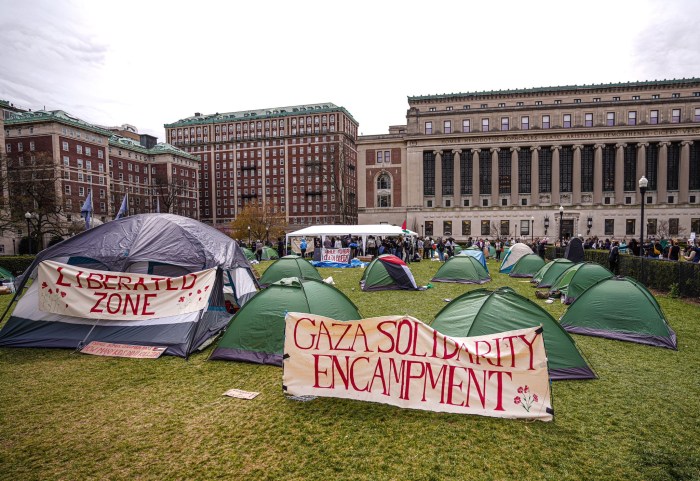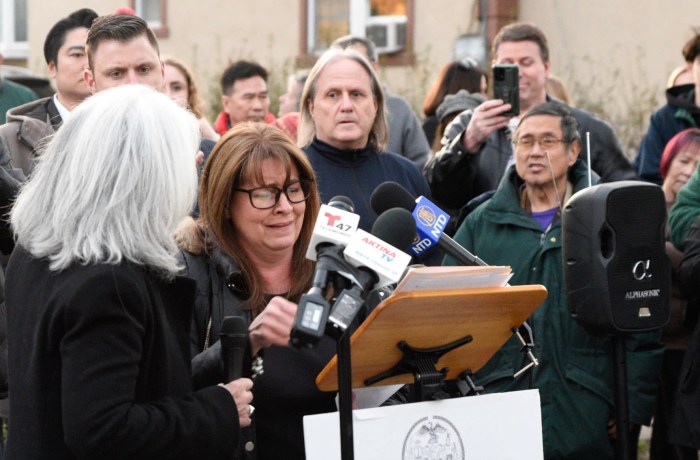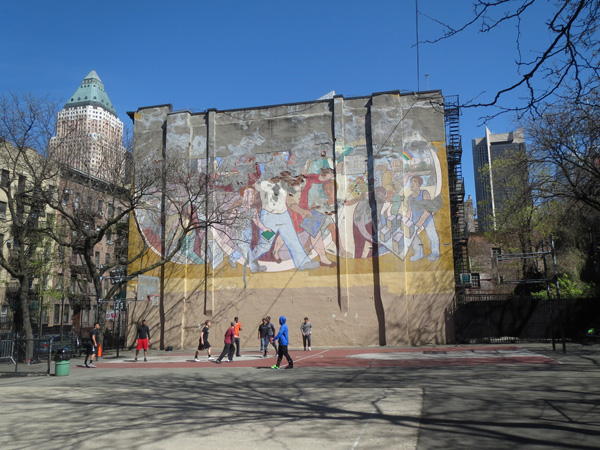
BY ZACH WILLIAMS | The solemn expressions of a proud and proactive proletariat hide behind the grime acquired during 43 years nestled in Hell’s Kitchen.
A casual observer would likely not notice the faded slogan within “Against Domestic Colonialism” which graces a W. 46th St. building adjacent to Matthews-Palmer Playground (btw. Ninth & 10th Aves.). Bare bricks replaced the faces of defiant work people years ago. Chipping and faded paint make it not so obvious that “We the people demand control of our communities,” reads an area of the mural. The top third of the painting was covered by stucco.
Yet neighborhood organizers say the only known outdoor mural by artist Arnold Belkin might return to its former glory this summer. The remnant of the urban renewal fights of four decades ago remains as relevant today as in 1972, when Belkin painted the scene of confident members of the lower classes fighting eviction and social blight. The mural itself now is just as important a cause, say activists.
“It hits home for our neighborhood of Hell’s Kitchen, and certainly all of New York City and beyond, that there’s a significant amount of corporatization and development going on in our neighborhoods. Some of it brings positive change and some of it really eats away at the fabric and soul of our city [which is] not necessarily meeting the needs of working New Yorkers,” said Chana Widawski, one of about eight local activists organizing the effort to renovate the mural.
The curved features, exaggerated limbs and muted colors evoke the Mexican masters who inspired Belkin’s work. But four decades of exposure to weather, sunlight and graffiti took their toll on the art as well as the building itself. Work must commence first on the host surface to ensure its stability and longevity, according to Edward Ward, another organizer who is a project manager for Beautify Earth, a local nonprofit which is also involved in the effort. The West 45/46 St. Block Association is also participating.
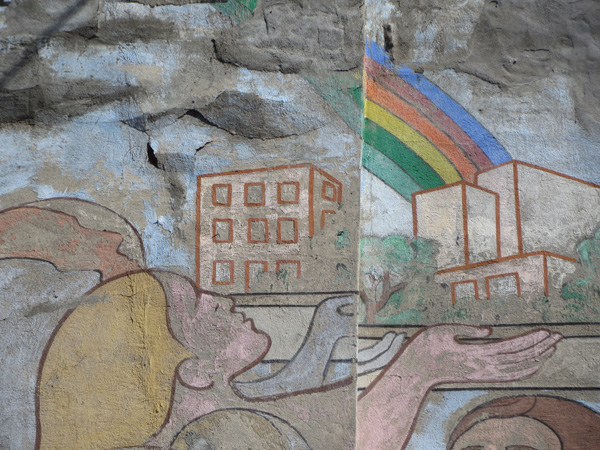
The structural effort would cost approximately $48,000, Ward said in an email. Organizers plan to request funding through established means such as the offices of elected officials, but Ward added that the time will come when local businesses and residents can contribute their part, whether through funding, donations or labor.
“The project is for the community, but also should be participated in by the community,” he said.
Plans entail a notification day in the playground and requests that local businesses and restaurants participate, Ward said. A “mural starting day” could attract residents through community pride as well as the fun provided by a block party with all the fixings: food, music and perhaps artists teaching their craft to local children, he added.
Organizers are optimistic that they can secure adequate funds to realize the restoration, in contrast to an effort undertaken several years ago, which stopped short. Beautify Earth offers resources which were not available before, said Widawski. For instance, the nonprofit enjoys relationships with local artists who are inclined to volunteer their skills — one example noted by Ward where additional costs, estimated at $20,000, could be minimized. The effort also benefits from preliminary study conducted in recent years.
The building owner supports the effort, he added. Organizers are currently waiting for permission from the city Parks Department in order to erect scaffolding at the playground which would support the work, he said. Construction could begin soon after the receipt of such approval, according to Ward. Work on the wall itself could take up to six weeks after the scaffolding rises. Once that concludes, a new-and-improved version of Belkin’s work could debut within a few more weeks, he added. Most of it would likely be recreated rather than restoring the original paint, according to Widawski, but nonetheless the spirit of the Canadian-born artist would remain.
“For the most part it will be recreating — but recreating [the mural] as the original design, not reimagining it,” she said.
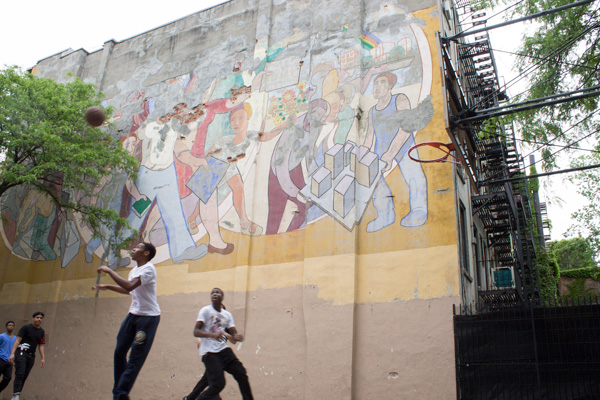
Belkin was known for infusing his work with politically confrontational themes. He believed the downtrodden must assert themselves against the rich and powerful. The study of his craft took him to Mexico, where he worked for the muralist David Alfaro Siqueriros — one third of “los Tres Grandes,” which also included Jose Clemente Orozco and Diego Rivera. But Belkin’s death more than 20 years ago means the survival of his work depends upon people safeguarding not only images, but also the messages, they contain.
These messages continue to resonate at a time when the lower classes and Hell’s Kitchen building heights continue to be threatened, according to Ward.
“Urban renewal has its place, but that place is not in redefining the daily environment of communities and the families that inhabit them,” he said in his email. “Hell’s Kitchen is a prime location for construction of this type, with its position between hectic midtown to its east and the Hudson River to its west,” he said.











